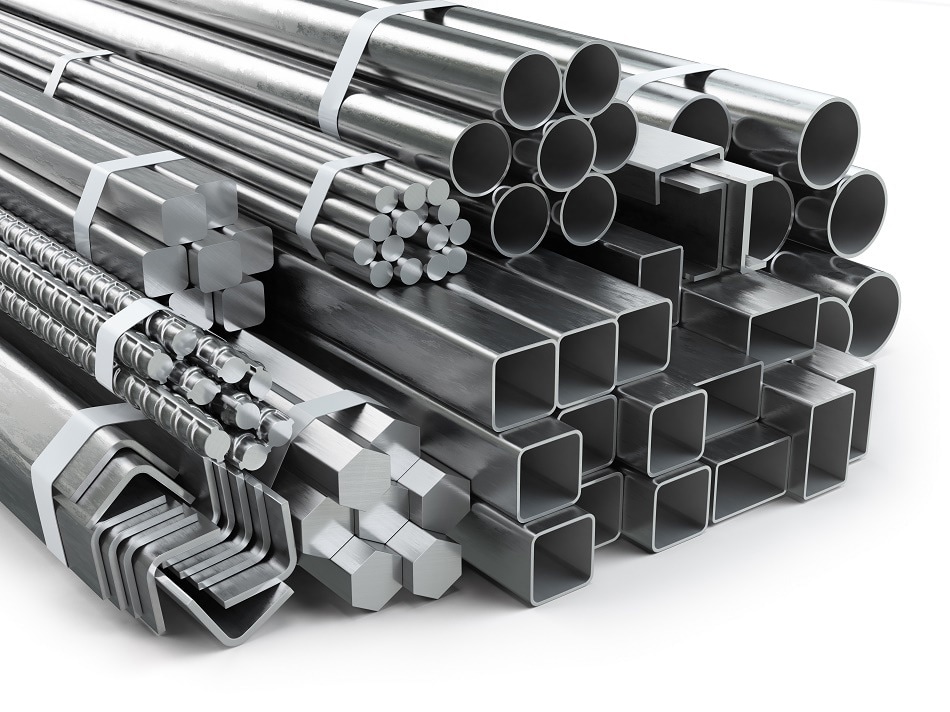High yield steel embodies exceptional performance under extreme structural loads. Tension, compression, impacts, abrasion and vibration are usual loads applied upon heavy industry components when in operation. These actions can lead to substantial deformation, structural displacement and mechanical failure where materials are not prepared to withstand the unique stress values of specific applications and working environments.

Image Credits: Maxx-Studio/shutterstock.com
The Importance of Yield Strength
A material’s capacity to endure structural loads up to the point of failure is measured as its yield strength. Several materials show plastic deformation under stress, which refers to a momentary elasticity caused by strain. Irreparable deformation or fracture happens at the limit of this elasticity, leading to permanent deformation or mechanical failure.
This concept is measured in pound-force per square inch (psi), or megapascals (Mpa). High yield steel is developed to offer enhanced resistance to an array of structural loads, in order to endure the severe actions innate in some of the most demanding applications on earth.
Structural-grade steels, heavy-load transporters, construction and engineering equipment, and offshore facilities all make pervasive use of high yield steels to guarantee the highest component or facility longevity in the face of exceptional load stresses.
High Yield Steel Strengths
High yield steels are developed to offer incomparable strength values post heat treatment and mechanical profiling. Steel alloys commonly show a decrease in mechanical properties after quenching and tempering, but high yield steels are regularly suited for heat treatment and bending with no substantial drop in the yield behavior of the material.
This is partly because of the alloying content of the steel grades which usually include low- to high-contents of titanium (Ti) and medium to ultra-high molybdenum (Mo) levels.
All the structural high yield steels offered by Masteel has been developed in agreement with EN 100025-6:2004. These include:
- S690QL, an economic high yield steel containing up to 0.20% carbon (C) and up to 0.8% silicon (Si), with a minimum yield strength of 690 MPa.
- S890QL, a structural grade high yield steel with comparable alloying contents to S690QL, with an enhanced minimum yield strength of 890 MPa.
- S960QL, shows a commensurate enhancement in yield strength over S890QL with minimum strength ratings of 960 MPa.
Hot-rolled high yield steels for cold forming hast to be manufactured in line with EN 10149-2. Masteel offers a variety of high yield strength steel plates under this description, such as:
- S500MC, a high yield steel employed for structural beams, frames, and cold-rolled sections with a yield strength of up to 500 MPa.
- S550MC, embodying an enhanced yield rate over the S500MC with strengths of up to 550 MPa.
- S700MC, the highest yield steel for cold forming structural load-bearing components, with an improved titanium content of up to 0.22% and elevated yield strengths of up to 700 MPa.
High Yield Steels with Masteel
Masteel is a specialist supplier of steel operating across a dependable worldwide network of consumers and the highest quality steel mills. The company offers some of the most recognized high yield steel grades on offer, such as novel alloys appropriate for the most challenging load bearing uses.
The S1100QL and S1300QL are created as ultra-high yield steels with excellent tensile strength values relative to their overall weight. This innovation in material engineering signifies the possibility of stronger and lighter components for the most demanding industrial uses.
High Yield Strength Steel for Mining Applications
Mining components including earth-moving buckets and geological drill-heads are exposed to an array of abrasive elements during their time of service. Direct friction from geological strata or other components can lead to deterioration of materials over time, reducing the throughput and efficiency of devices and demanding possibly costly maintenance procedures.
High yield steels are routinely used to manufacture components that can resist the unique abrasive forces encountered in the mining sector. These demand incomparable mechanical strength values and good degrees of formability to allow the manufacture of complex steel shapes that can endure both abrasion and corrosion.
This article will look at an ideal high yield steel grade for manufacturing mining components in further detail.
High Yield Steel for Mining Components
High yield steel grade S890QL is an exceptional structural steel with high strength values in both quenched and tempered conditions. Strengthening the plates like this boosts the abrasion resistant qualities of the material by promoting perfect ratios of hardness, ductility and physical integrity against geological abrasion and mechanical agitation.
This epitomizes a unique balance of extreme mechanical stability and good format availability. Notwithstanding the exceptional hardness and strength values of S890QL high yield steel, it is still capable of still being welded and bent for maximized component fabrication complexity. This allows S890QL high yield steel to be applied for strengthening earth-moving and drilling equipment against heavy payloads, abrasive media, and corrosive elements found in some geological strata.
The strength values of S890QL high yield steel usually surpasses standard structural steels by more than three times, with a minimal yield strength of 890 MPa and a low notch toughness testing temperature. This high yield steel is conforming with EN 10025:6:2004 for hot-rolled steel products and is widely applied in the mining and earth-moving sector.
High Yield Steel with Masteel
Masteel is dedicated to delivering high-quality steel products every time and rapidly to any facility or mining location globally. Masteel hold stock for a variety of industries and obtain their high-yield steels from the highest quality European mills.
The S890QL high yield steel is specifically suited for use in the mining industry with elevated carbon contents of up to 0.20% and molybdenum contents of up to 0.70%. This offers an exceptional mixture of mechanical hardness and corrosive resistivity, to endure several weathering agents met in the mining industry.

This information has been sourced, reviewed and adapted from materials provided by Masteel UK Ltd.
For more information on this source, please visit Masteel UK Ltd.